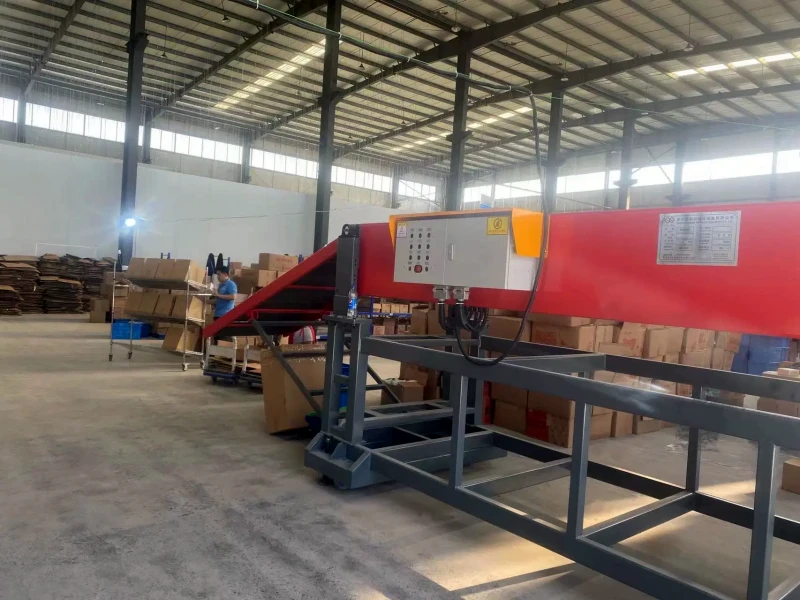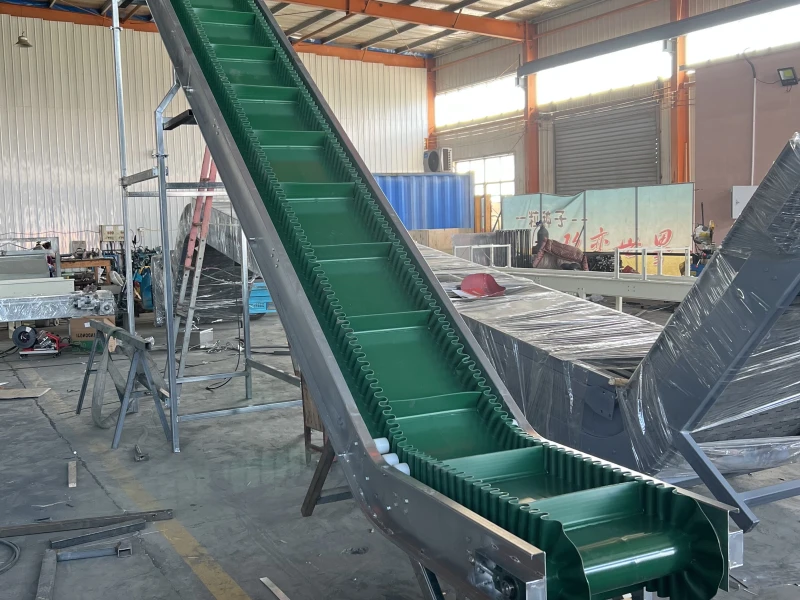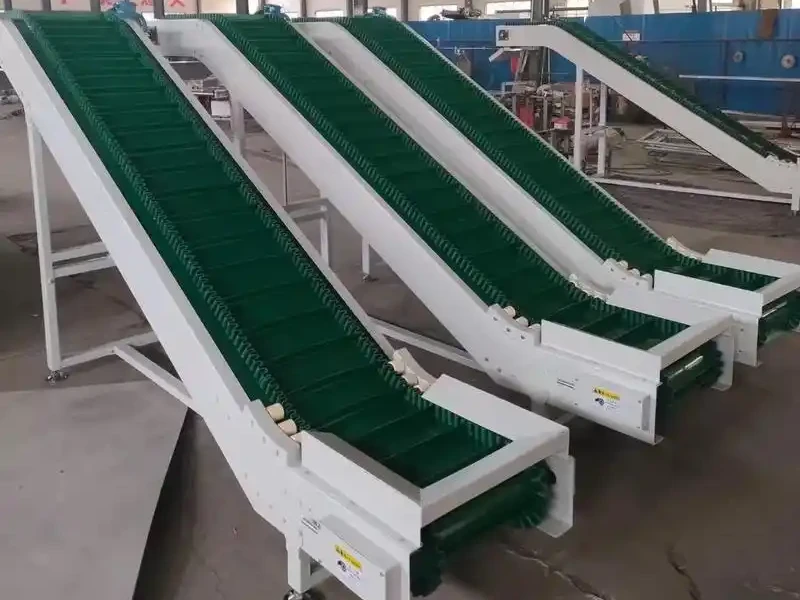
Inclined Conveyor for Handling Materials at Multiple Angles
In today's context of increasingly diverse materials and processes, traditional horizontal conveying equipment struggles to meet the demands of handling material at multi-angles. The inclined conveyor, with its unique advantages, stands out as an efficient solution for flexible and precise material transportation. This article will comprehensively explain the applications and advantages of inclined conveyors.
1. Definition of the Inclined Conveyor
The inclined conveyor is a cleverly designed conveying device capable of transporting materials horizontally and vertically. Utilizing an inclined conveyor belt or chain along with a transmission system, it efficiently moves materials from lower to higher elevations. Notably, its inclination angle can be adjusted flexibly according to specific requirements, ranging from a few degrees to several tens of degrees. This makes it highly adaptable to various complex working environments and capable of meeting diverse material handling needs. The incline conveyor can be belt conveyor or roller conveyor system.

These are powered flexible roller conveyor system.
2. Key Advantages of the Inclined Conveyor
Exceptional Multi-Angle Conveying Capability
One of the standout features of the inclined conveyor is its adjustable angle, enabling full-range material handling from horizontal to vertical directions. Whether in material lifting, lowering, or horizontal transfer processes, it handles tasks effortlessly. This provides businesses with a versatile and flexible solution, breaking the angle limitations of traditional conveying equipment.
Efficient Space Utilization
Compared to conventional horizontal conveyors, the inclined conveyor excels in space efficiency. It makes optimal use of vertical space, making it especially suitable for areas with limited space or high demands for efficient spatial usage. By seamlessly connecting multiple conveying sections, it completes complex material transportation tasks within a smaller footprint, saving valuable space for businesses.
Significant Reduction in Manual Labor
The inclined conveyor's strong automation capability drastically reduces the workload associated with manual material handling and lessens dependency on human labor. Furthermore, it integrates seamlessly with other automated devices or systems to ensure continuous material flow, improving both production efficiency and accuracy, thereby supporting high-efficiency operations.
Effective Minimization of Material Loss
Equipped with specialized conveyor belts or chains and anti-slip and anti-spill devices, the inclined conveyor ensures the stability and safety of materials during transportation. This significantly reduces the risks of material loss or damage, enhancing quality control in the logistics process and safeguarding economic benefits for businesses.
3. Extensive Applications of Inclined Conveyors
Inclined conveyors hold a vital position across numerous industries and boast broad applicability. For instance, in mines, construction sites, and port terminals, they excel at overcoming challenges of multi-angle and complex terrain material handling. Likewise, in industries such as food processing, chemicals, electronics, and pharmaceuticals, they efficiently address diverse material transportation needs. The inclined conveyor are often comibed with horizontal conveyor, flexible roller conveyor and telescopic belt conveyor to handle bags, cartons, boxes, packages, etc.

This is a corrugated sidewall belt conveyor system.
4. Key Considerations for Using Inclined Conveyors
Optimize Design
When selecting an inclined conveyor, businesses must carefully consider critical factors such as material properties, dimensions, and handling capacity. This ensures appropriate selection of equipment dimensions, angles, and speeds to guarantee smooth material transportation, efficient operation, and optimal performance.
Enhance Safety Measures
Safety is paramount. During the installation of inclined conveyors, necessary safety features such as protective devices and emergency stop mechanisms must be in place to mitigate risks of accidents or injuries. Additionally, comprehensive training and guidance for operators are crucial to ensure they master operating procedures and safety precautions for safe equipment operation.
Conduct Regular Maintenance
Regular maintenance of inclined conveyors is essential. Cleaning debris from conveyor belts or chains, inspecting transmission and anti-spill mechanisms, and other detailed upkeep tasks are vital to ensure the equipment operates smoothly, remains stable, and achieves a longer lifespan.

These are corrugated sidewall belt conveyor systems.
As an efficient solution for multi-angle material handling, the inclined conveyor plays an indispensable role in logistics and production. With its multifunctionality, space efficiency, and automation features, it excels in performing complex material transport tasks, improving production efficiency, and enhancing quality control. By providing reliable support, it significantly contributes to business development.


Leave Me Your Requirement!